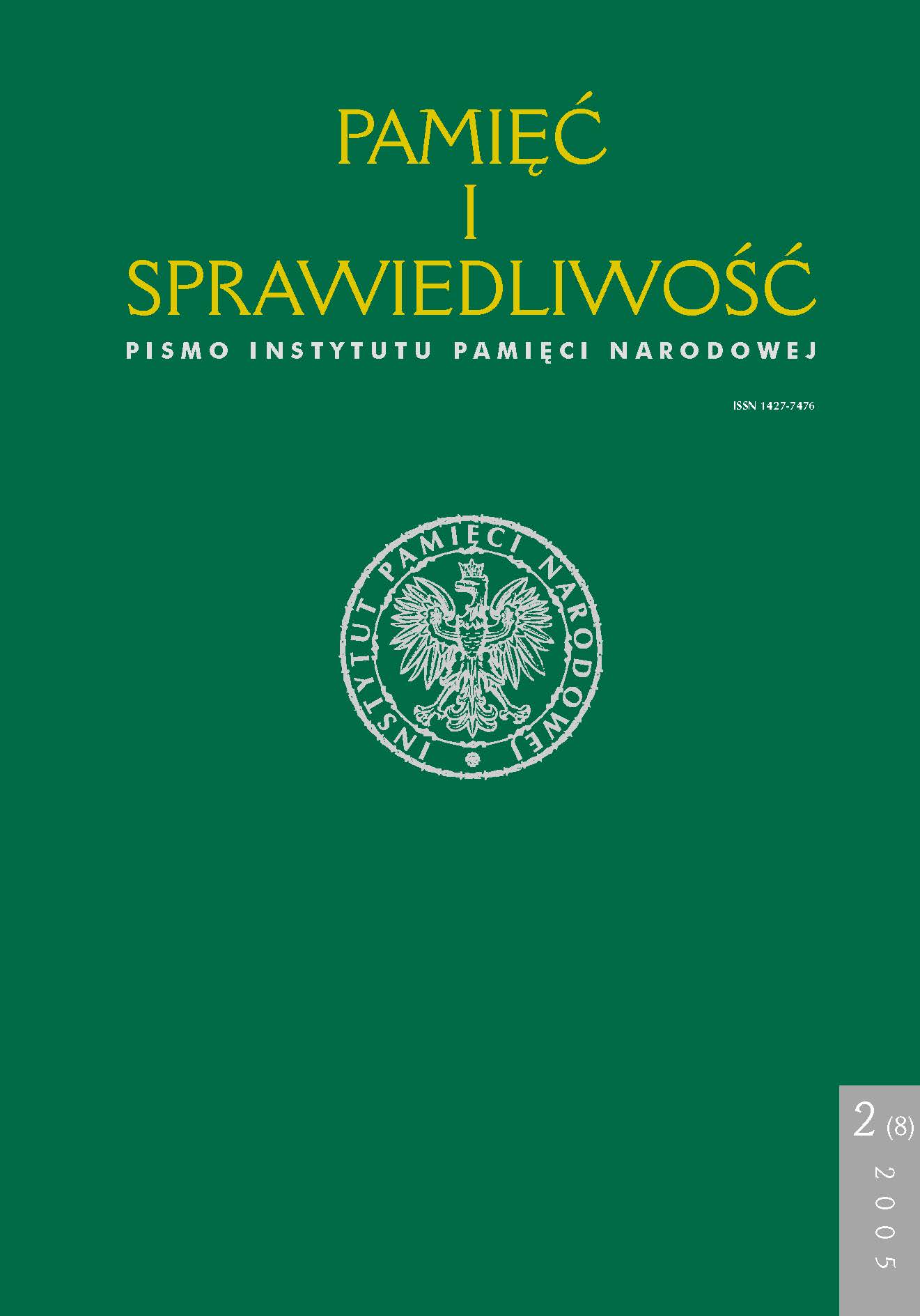Kościół katolicki w województwie białostockim wobec podziemia antykomunistycznego w latach 1945–1953
Pamięć i Sprawiedliwość, Bd. 8 Nr. 2 (2005), pages: 125-141
Publication date: 2005-12-30
Abstract
The article depicts the communist system of oppressing the Catholic Church in Poland between 1944 and 1953. In the light of certain facts it is pretty obvious that the security apparatus must have been prepared to fight the clergy from the very beginning, especially that it was known to support the underground movement. Although, the priests were not openly persecuted before 1947, individuals happened to be victimized by the UB.
According to information the MBP received from the Bialostocczyzna region, after 1945 the local clergymen stayed in touch with the resistance forces: stored its weapon or archives,
performed church services. The oppression of the Church intensified in 1947–1953; most of the clergies’ trials that finished in long jail sentences took place that time. In order to discredit the Church and reduce its influence the Fifth Section of the Fifth Department, founded on the 11th of January 1946 in Bialystok, was instructed to organize an internal spy ring. But while realizing the task, many difficulties were encountered.
Because the neutralization of the catholic clergy was to be achieved by recruiting secret cooperators who would hinder the Church from conducting the political propaganda (as it was called), unfriendly attitude of priests to the system was really an obstacle. In this case the security apparatus failed as shows the result of the election held on the 19th of January 1947, when similarly to the referendum, priests from the region voted predominantly against the people’s democracy.
In 1949 the action taken against the catholic Church was joined by the prime minister – Józef Cyrankiewicz. In his expose, on 10th of January, he declared that using pulpits to spread anti-state propaganda and supporting the underground would be punished to the full extent of the law. He also announced that those priests who would prove their patriotism would be taken in care. This activity culminated in show trials of the priests accused of cooperation with the anticommunist underground. One of the first convicted was a curate of the Barglow parish in the Augustow district, Zygmunt Poniatowski.
Being kept under more and more meticulous surveillance, the clergymen became the object of increasing pressure. The goal of such an action was to break the anticommunist defiance and subordinate the priests to state authorities. However, the cooperation between the Church and the underground movement has never been broken. The article ends with one of the most famous events of that time: the case of Kazimierz “Huzar” Kamienski who went on trial in 1953 together with some priests. Victimizing the Church, however, did not stop. It lasted on in different forms and variable intensity.
Am häufigsten gelesenen Artikel dieser/dieses Autor/in
- Krzysztof Sychowicz, Kościół prawosławny a system komunistyczny w województwie białostockim (1956-1981). Zarys wzajemnych relacji , Pamięć i Sprawiedliwość: Bd. 37 Nr. 1 (2021)
 Język Polski
Język Polski
 English
English
 Deutsch
Deutsch
 Français (France)
Français (France)
 Italiano
Italiano
 Русский
Русский


 PDF (Język Polski)
PDF (Język Polski)
